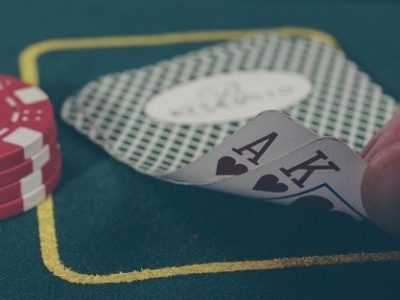The Story of Munehisa Homma. A Must Read for All Traders.
Munehisa Homma is an unsung Japanese hero. We know little of Homma’s life. In some reports his name is spelt Honma, and the activities that were to make him a hero are ascribed to any time from 1650 to 1750. This is his story.
Homma ran the family rice trading business and rice was the lifeblood of Japan. More than a food, rice was a culture, Rice growing villages lived their whole lives around the rice planting, growing and harvesting cycle. Various parts of this cycle were celebrated with festivals and formal ceremonies. Rice was a precious commodity. Rice was more than a commodity; rice was a culture central to Japanese life. From rice came Sake the famous Japanese rice wine, rice cakes, rice flour, rice vinegar and much more. The rice plant produced not only its precious grains but a large amount of lush green foliage which when dry became straw. Rice straw too was an essential part of Japanese life. From straw, traditional villagers in the north made hats, clothes, utensils and the exquisitely fine rice paper. They made important religious figures, masks, decorations and a hundred other everyday items
Rice was the Japanese economy. Feudal rulers, Daimyos collected grain from the farmers as land tax and sold it from their storehouses. Rice trading was the Japanese way of life for farmers and the merchant class. Soon rice would replace currency as the value of worth in the Feudal land of Japan.
Today would be the most important day of Homma’s life, the day he would launch himself on the great adventure that would see him reach dizzying heights of fame and fortune; the day that would eventually see a humble rice trader of the merchant class achieve the greatest honour his country could bestow.
This Monday morning Homma sat cross legged on his precious straw mats at his family rice warehouse and forced himself to concentrate on the lists of deliveries and inventory that required his attention every morning. He looked longingly at a pile of large, fine, rice paper parchment beside his small desk. These parchments were unusually large and ordered for Homma by his good friend Nomura San who made the best Tofu in all of Japan and had access to the oversized parchment which was made in Kyoto. Strangely rice paper is usually not made from rice at all. What most people mean by rice paper was more typically made with any of the three traditional materials of kozo (mulberry), gampi or mitsumata. But this was a special paper for a very special purpose.
These papers were Homma’s most precious possession. More precious than the family’s land and warehouses; more precious than the inventory of rice bales stored in the six separate warehouses. It was covered with strange symbols all of them painstakingly drawn by Homma. These symbols ran up and down the sheets in strange whirls and patterns. Numbers ran across the bottom and along the sides of the parchment. Some of the indecipherable symbols were colored in red; others were not. The work to produce these magical symbols had been long and arduous. For 15 years Homma had researched ancient records, thinking about what he saw and what he learned and always striving to perfect his understanding of the strange language contained in the symbols. It was a frustrating task.
At times Homma despaired of making the intellectual breakthrough he knew was required. On those days he would retire to his tiny garden where there was a single strategically placed, large, moss covered stone amidst a small stream and two ancient Cherry trees. Homma would gaze at the stone in silent contemplation. Eventually balance or “Wa” returned to his mind. Something deep inside him forced him to return to his research every day. Instinctively he knew that if he could read just a small part of this mysterious and secret language the rest would unravel, but the search seemed never ending. Homma gave names to each of the symbols and looked for their sequence to repeat. With so many symbols this was indeed an arduous task. As the years passed Homma gradually gained some of the insight he sought. It came not as a bolt from the blue but as a gradual dawning of comprehension. This indeed was insight. This indeed was rare knowledge!
At last Homma put aside the workaday chores of his family business and pulled the large rice paper parchments to his side. He gazed with fascination and reverent awe at the sheets, then inking his writing tool made from fine hairs, he consulted his notes and carefully inscribed a small square to precise points, then drew a small line from the top of the square upwards. In due course he drew another line of a different but exact length downwards from the square. With unhurried but long practiced precision he finally inked in the box with red ink and sat back. He repeated this procedure on several more of the fine parchments being careful to place each sheet apart for the ink to dry.
Homma called for a pot of Sencha tea and contemplated his drawing for an hour. He had reached the stage where he could read a number of the secret symbols. In time he would master them all. Of those he did understand he noticed they had consequences. One symbol indicated a certain probability; another symbol had a different meaning. From his limited understanding he had isolated a small group of these magical beasts and watched what happened when a specific sequence occurred. He had tested these sequences in his research hundreds of times and he had seen their specificity repeat again and again. His research covered over 1500 years of records. No one had ever observed a reoccurring event over such a long time span. Now at last he was ready.
Tomorrow he would rise and leave for the rice market where he would undertake his true calling and unknowingly launch himself into the pages of history. His preparations were made and his mind was serene in the knowledge that he possessed insight unknown to others. At the end of the day Homma took a pot of Gyokuro “the dew of jewels” and most precious of Japanese teas to celebrate today’s events. Homma was about to take the greatest gamble of his life. It would not be a gamble based on certainties but a gamble based on probabilities. From his endless research Homma could calculate the probabilities better than any man alive.
Homma felt blessed to live in Osaka and doubly blessed to know about rice. Homma knew a great deal about rice. This was the first day.
On Tuesday, Homma arrived at the rice market, just as a group of growers trundled their carts laden with the new season rice bails into the town square. Here, merchants would inspect and haggle with the growers and their representatives to set today’s prices on the bales arriving from local growers and from inland. The growers and their agents were in a gregarious mood. The early harvest was good and the new rice bright and shiny. But business was lethargic. Tea was drunk and pleasantries exchanged. There was no urgency for the merchants to buy.
The big rice merchants of Osaka adopted their usual pose of indifference. Just sit quietly and show no interest. This tactic always wore down the growers. The biggest rice buyers operated an informal cartel which controlled local prices. They could afford to wait. Growers had more rice on their farms and the main harvest was still to come from the large rice growing regions to the North and inland. “Yes” they said to the local growers, “it is a very nice rice crop; the gods have smiled and you are indeed fortunate; so sorry, our warehouses are full and nobody is buying rice, we are not really buying new bales today”.
Quietly Homma went about his business, greeting the growers, inquiring about their health and their families and buying their offerings. As the day wore on, other merchants noticed Homma still quietly greeting the new arrivals at the market and still buying, buying, buying. What was he doing? Why was he buying? Didn’t he know that this was just the start of the harvest and prices were sure to fall as more rice came to market? Silly boy; too impatient; what an embarrassment to his family! This was not the way of the Osaka rice merchants. This was the second day.
Wednesday saw the process repeated. Homma buying, the others pointedly ignoring the new growers as their carts bought in the new bales. Today there were noticeably fewer bales arriving. The cartel, now openly scornful of Homma watched him again operating in his quiet way and still buying. Homma was not perturbed, he knew things that others didn’t know because Homma had that most important of all market jewels…..Homma had an edge! His edge was that he knew things about the market that other traders and merchants did not know. In modern terms he had a huge competitive advantage.
At midday an exhausted horse and its disheveled rider clattered into the town square. The rider rushed to the leader of the Osaka merchants, crouched beside him and whispered fervently. The merchants’ news service was catching up with reality. The rider from the north was the last leg of a relay to bring the awful news to the cartel of merchants. Late and unseasonal rains in the major growing areas were ruining the annual rice harvest! There would be no abundant crop this year and rice prices were going up and up as the commodity grew scarce.
Now the Osaka merchants moved with a real sense of urgency as they rushed to the growers. With no abundant supplies to come as the season wore on, they must buy what they could from the local supply. “So sorry” said the largest grower, “all of my rice bales have been sold to Homma”. “What will you bring to Osaka tomorrow” asked the merchant. “So sorry” replied the grower, “all of this year’s harvest from my farms has been sold to Homma” The same story was repeated by every grower. There was nary a grain of rice to be bought in the whole of Osaka.
Homma had cornered the Osaka rice market! This was the third day.
The merchants cursed their intelligence sources and poured scorn on their news providers. Their horses were too slow; the riders were lazy, they deserved a good kicking; the only explanation must be that Homma had better intelligence. He must have a courier pigeon service to know these things. Now the merchants would be forced to buy their new rice from Homma and he was sure to ask a heavy price.
As the sun rose on the fourth day Homma sat in his warehouse with his beloved sheets of rice paper covered with the strange symbols. Local men had worked through the night to store the huge supply of new rice bales in his warehouses. Additional warehouses were being leased to accommodate the rice bales still to arrive from the local farms. Warehouse space in Osaka this year was cheap as the rice crop would be limited to local supplies. In an hour the rice merchants of Osaka would be at his door desperate now to buy some of the new season rice that they had so mistakenly refused in the past three days. Homma’s edge was not in faster horses or pigeons; in fact Homma studiously avoided news and industry gossip.
Homma’s edge was in the rice paper parchment. All of those strange patterns that Homma laboriously drew on his parchment every morning, day after day and year after year, were not just pretty patterns, they were symbols that recorded the previous days and weeks of rice prices and they were drawn in a very specific way.
Homma had invented modern market charts and his beautiful patterns were to become known as “Candlesticks” From the candlestick patterns Homma could tell with a high degree of probability the likely future direction of rice prices. This knowledge and the “edge” that it bestowed on our hero was literally priceless. Homma had broken the rice merchant’s cartel and would forever reign as the leader of the Osaka rice merchants. In four days Homma had become the prince of rice traders.
His candlestick charts reflected everything that was known about price; the open, high, low and close. The relationship of the close to the opening price would determine whether the candlestick was hollow (price moved up from the open to the close), or filled (usually black or red). Homma gave each of these patterns its own name; Long days, Short days, White Marubozu , Black Marubozu, Spinning tops, Stars, Rain drops, Dark Cloud Cover, Evening Star, Doji’s, Three Black Crows, Dragonfly Doji, Hanging Man and others. Each had a specific meaning to Homma.
After dominating the rice market of Osaka, Homma the world’s first recognised chartist went on to conquer the Muneisha trade in the market of Edo where he was reported to have made 100 consecutive winning trades! His trading activity in the rice market makes Gann look positively ordinary.
Homma’s fame spread throughout Japan. He was considered the god of markets. In due course he became a prominent financial adviser to the Government of the day and was raised to the rank of Samurai! No greater honour could be bestowed on a Japanese citizen.
His books “Sakata Shenso” and “Soba Sani No Den” increased his fame and the meanings he ascribed to his patterns became known the “Sakata Rules.” The Sakata Rules are the basis of modern candlestick charting.
The Dojima Rice Exchange was formally institutionalized in the late 1600’s. Merchants graded rice and negotiated their fair market value. After 1710, rice trading expanded into the issuance of and negotiation of rice warehouse receipts, or rice coupons, the earliest form of modern futures, and rice became the bedrock of Osaka’s economy. 1,300 rice dealers occupied seats on the Dojima Rice Exchange.
After a debasing of the Japanese currency, rice became the preferred currency. A Daimyo in need of money could send his surplus rice to Osaka, get a warehouse receipt, and sell it at a greater profit. Selling harvests and mortgaging future crops became commonplace.
The rice coupon made the Dojima Rice Exchange the world’s first futures exchange. Rice coupons were known as “empty rice”–rice not in physical possession, or rice that had not been harvested. Rice coupon trading became so prominent that in 1749, 110,000 rice bales were freely traded while only 30,000 bales existed in all of Japan.
Today
With 400 years of trading knowledge and tradition, combined with a diligent work ethic and keen intelligence, it is not surprising that trading of financial markets is so popular in Japan. Today Forex trading is the in thing. Australia’s ABC recently ran a TV documentary on the Forex trading craze sweeping Japan. The new generation of traders are motivated, educated and have the traditional Japanese courage and acceptance of risk. The point of the TV show was that the huge predominance of this new generation of traders are women!
Like our hero Munehisa Homma, the best of today’s traders need an edge. Like Homma they need to know things about the market that others don’t know. Many trading systems try to create that edge. Most of them to one degree or another build on established market lore or innovate with technology. Homma made his great discovery of candlesticks by observing markets and the seasonal patterns of the rice trade for years if not decades. His research was meticulous and he had 1500 years of rice growing history to observe. His work was new, unique and meticulous. Being unique meant that he didn’t “stand on the shoulders of others”; this means that he created an entirely new method of reading the price movements in the rice market. His edge lead to huge success, fame, fortune, honours and recognition by his nation.
He was indeed a fortunate man.
The Danielcode
Today’s edge for forex, equity, bond and Gold traders comes from another unique invention somewhat older than the historic Japanese rice trade, but born of that same endless observation of prices and markets. The Danielcode is a series of sequential numbers created from the writings in the Book of Daniel in about 640BC. Daniels numbers are about “time” but they operate on many levels. The Danielcode takes the timing component of the modern markets” movements and converts them into unique price levels which markets recognize but which are unknown to others.
The Danielcode is equally effective on long term charts and short term charts. On 25th July 2007 the following ALERT was issued to Danielcode hedgers, investors and traders:
“With all of the markets we follow at Danielcode target levels, we are at a position where a universal currency reversal (sic of the markets we follow) could occur. IF we get the reversal it will also have ramifications for global equity markets.”
This is where markets were on that day:
The Danielcode report and charts proved prescient as the following charts show what happened starting the very next day:
Forex markets on which the Danielcode was operating at the time had a heart attack. You can read the full text of this historic alert and see all of the operative Forex charts complete with their Daniel numbers at the Danielcode website archives.
Would you have benefited by knowing in advance the high probability of these dramatic market moves occurring? Clients of the Danielcode knew and adjusted their hedging strategy accordingly. The very few private traders who knew had the trade of a lifetime!
On the 26th July, the Dow Jones Index went into free fall and was down 1157 points into August 16th. Global equity markets indeed saw some ramifications as the Nikkei plunged 2500 points.
If you want to have a trading edge like Munehisa Homma, I invite you to go to the Danielcode website and read the archives and other information.
There is much to learn.














Pingback: All You Need To Know About Candlesticks Charts